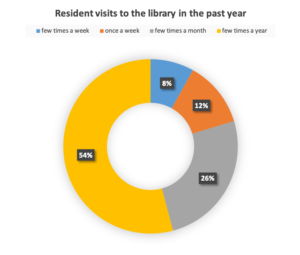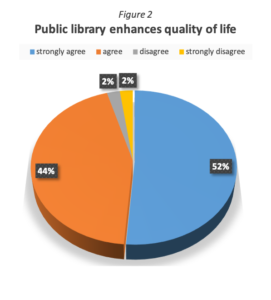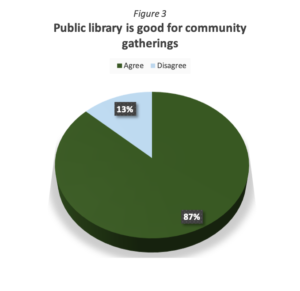STROVER, SHARON, PI; BRIAN WHITACRE, COLIN RHINESMOTH, CO-PI; ALEXIS SCHRUBBE AND GERMAN ALVAREZ, RESEARCHERS
Supported by the Institute for Museum and Library Services, Grant #31-16-0014-16
Introduction
The Technology & Information Policy Institute at the University of Texas at Austin, in partnership with researchers at the University of Oklahoma and Simmons University, examined how rural libraries address the challenges of Internet connectivity with the use of library-based hotspot lending programs as well as the hotspot’s role in the rural digital environment. This research was led by investigators with backgrounds in communications, library science, economics and community development who have experience examining the relationship between Internet connectivity, community-based efforts to address the digital divide, and the economic and other outcomes associated with Internet use both at the individual and community levels. Our overall aim was to address the practical, operational requirements and considerations for offering hotspot lending programs alongside the broader issues facing broadband connectivity in rural regions. This summary provides insight into these inquiries by examining one component of our data, a survey of six rural communities in four counties.
About the Data
The results summarized here represent one of many research components in our project, namely a mailed and online survey directed at five communities in our study of rural libraries in Kansas and Maine. The survey was available online and as well as hard copy formats. The sampling frame is registered voters (N=7000) in selected regions of those two states – including six communities in which the local public library had offered a hotspot to patrons. We chose communities in which roughly 70% of more of the population was in fact registered to vote (one county was lower, at a 64% voter registration rate). Within those communities, every registered voter was contacted in four ways: with an initial postcard informing them about the survey and providing an online link at which to complete the survey; with a full questionnaire and information form; with a reminder postcard; and finally with another final full mailing with a questionnaire. Our response rate is roughly 13.3%, quite acceptable for a mailed survey.
The items in the survey concern connectivity, social capital and library roles in communities. We replicated several items from a national survey From Awareness to Funding conducted by OCLC and the ALA earlier in 2018 whose mission was to assess public support for funding libraries. We offer some comparisons between our “small town” results and the national survey periodically in this document.
Rural Perceptions of Libraries
A majority of rural area residents see great benefits to their public libraries.
Our analysis shows that 70% of the respondents believe their library to be a great resource for students to get help with homework, and 57% said that it is a vital resource to small businesses. From this, it should come as no surprise that 94% of rural Americans said it would be a great loss to their community if their public library closed down.
While 84% of the rural respondents have visited a library in the past year – over half of them reporting they visited at least a few times that year – comparable national data report that 70% of voters have visited a public library at least once in the last year (Figure 1).

Interestingly these rural residents valued the library for many reasons. In addition to being a source for books and the reading material, libraries also serve as a resource for business and education. Indeed many saw their public library as a locus of community gatherings and said it enhanced the overall quality of life, as shown in Figures 2 and 3.


Rural and National Attitudes Compared
In 2017, OCLC teamed up with the American Library Association (ALA) and the Public Library Association (PLA) to study the underlying reasons voters support library funding. The study sampled two populations, one of US voters living in areas with a population fewer than 300,000, the other living in areas with greater populations. Their results showed little variation in public attitudes toward public libraries based on population size.
However, in Table 1, we compare their results to the rural public attitudes captured in our survey of exclusively small rural communities. These results illustrate that small communities value public libraries much more for their free access to books, their ability to provide resources to students, their ability to enhance local quality of life, their ability to help locate trusted information, and their importance for local small businesses compared to larger communities. However, rural respondents are significantly more likely to agree that Internet-based research is easier than doing research in the library and they register the slightly higher agreement with the statement that the public library is “not top of mind” for regular visits.
Table 1
Selected attitudes toward reason for valuing public libraries: Comparisons between ALA survey and IMLS survey
| National Survey | Cities with populations <300K | Cities with populations 300K+ | IMLS Rural Communities Survey | |
| Free access to books | 65% | 66% | 63% | 93% |
| An excellent resource for students to get help with homework | 53% | 52% | 55% | 68% |
| A place to turn to for help in disaster situations | 41% | 41% | 41% | 38% |
| Enhances the quality of life in a community | 57% | 58% | 56% | 83% |
| Helps people find trustworthy information | 62% | 62% | 62% | 90% |
| An important resource for small businesses (by providing space, WIFI, business expertise and resources, etc.) | 46% | 45% | 49% | 57% |
| With the Internet, the public library has become obsolete | 25% | 24% | 28% | 6% |
| My public library is not top of mind – I just don’t think to go there | 26% | 25% | 28% | 30% |
| It’s easier to do research on the Internet using search engines like Google and Yahoo! than in the local public library | 38% | 39% | 36% | 63% |
Conclusion
Rural inhabitants strongly value local libraries and use them for many purposes. In comparison to the OCLC National Survey, we see a strong and positive difference between how rural people value public libraries compared to the rest of the country. This suggests that despite the growth of digital information technology that is often used in the home, public libraries continue to play a significant role in rural communities. A rural town’s library can provide information and services of all sorts through its Internet connection, computers, and 5 knowledgeable personnel. In addition, rural survey respondents indicate that their library provides benefits beyond access to information, Internet and digital technology, enhancing the community’s quality of life. In short, the role of the public library in rural communities has not waned and in fact, may be escalating as more digital resources and digital expertise reside in the public library.
To allow for comparisons across segments and time, the new study is based largely on the original survey instrument and population (voters age 18 to 69 living in populations of 300,000 or less), yet expands queries into new types of library services, community impact, perceptions of funding sources other than taxes, and attitudes toward federal funding. Two population segments that were not part of the original research panel—people age 70 or older and people who live in large cities (populations greater than 300,000)—have been added and analyzed separately. In our survey, we took the top two blocks of our five-point scale ranging from 0 Strongly Disagree to 5 Strongly agree. For comparison, the percentages listed in the OCLC report took their percentage from points, 8, 9 and 10 of their 10 point scale ranging from 1 disagree strongly to 10 agree strongly.
